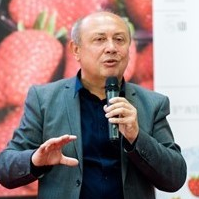Advances in Genetic Engineering Strategies for Fruit Crop Breeding
A special issue of Plants (ISSN 2223-7747). This special issue belongs to the section "Plant Molecular Biology".
Deadline for manuscript submissions: closed (31 July 2020) | Viewed by 12048
Special Issue Editors
Interests: fruit plant breeding; biotechnology
Special Issues, Collections and Topics in MDPI journals
Interests: fruit breeding; biotechnology; genetic transformation
Interests: techniques for creating genetic variability in perennial fruit crops; in vitro regeneration approaches (organogenesis and somatic embryogenesis) to be applied for mutagenesis and new genomic techniques; RNAi strategies (HIGS, SIGS); cisgenesis/intragenesis; gene editing
Special Issues, Collections and Topics in MDPI journals
Special Issue Information
Dear Colleagues,
Genetic engineering offers important opportunities for fruit crop genetic improvement of agronomic traits relevant for increasing sustainability of the cultivation systems and quality of the products used for fresh and processing industries. This potential presently looks enhanced by the availability of new breeding techniques (RNAi, cisgenesis, and gene editing). Furthermore, the application of RNAi technology in the rootstock offers the possibility to induce modifications in the scion without altering its genome. The main limiting factors for the application of these technologies in fruit crops are the development of efficient methods for direct and Agrobacterium-mediated genetic transformation, such as plant regeneration and selection of new modified events. In addition, the biosafety rules to be applied to new modified fruit plants are not yet fully explored. This Special Issue of Plants will highlight the new methods for genetic transformation/gene editing combined with modified plant regeneration and selection, the new type of gene/traits that can be improved, and the appropriate approaches for running the risk and benefits analyses of the new products.
Prof. Bruno Mezzetti
Dr. Lorenzo Burgos
Dr. Silvia Sabbadini
Guest Editors
Manuscript Submission Information
Manuscripts should be submitted online at www.mdpi.com by registering and logging in to this website. Once you are registered, click here to go to the submission form. Manuscripts can be submitted until the deadline. All submissions that pass pre-check are peer-reviewed. Accepted papers will be published continuously in the journal (as soon as accepted) and will be listed together on the special issue website. Research articles, review articles as well as short communications are invited. For planned papers, a title and short abstract (about 100 words) can be sent to the Editorial Office for announcement on this website.
Submitted manuscripts should not have been published previously, nor be under consideration for publication elsewhere (except conference proceedings papers). All manuscripts are thoroughly refereed through a single-blind peer-review process. A guide for authors and other relevant information for submission of manuscripts is available on the Instructions for Authors page. Plants is an international peer-reviewed open access semimonthly journal published by MDPI.
Please visit the Instructions for Authors page before submitting a manuscript. The Article Processing Charge (APC) for publication in this open access journal is 2700 CHF (Swiss Francs). Submitted papers should be well formatted and use good English. Authors may use MDPI's English editing service prior to publication or during author revisions.
Keywords
- fruit crops
- genetic transformation
- morphogenesis
- selection
- gene/traits of interest
- field trials
- risk and benefit analyses
- consumer acceptance







